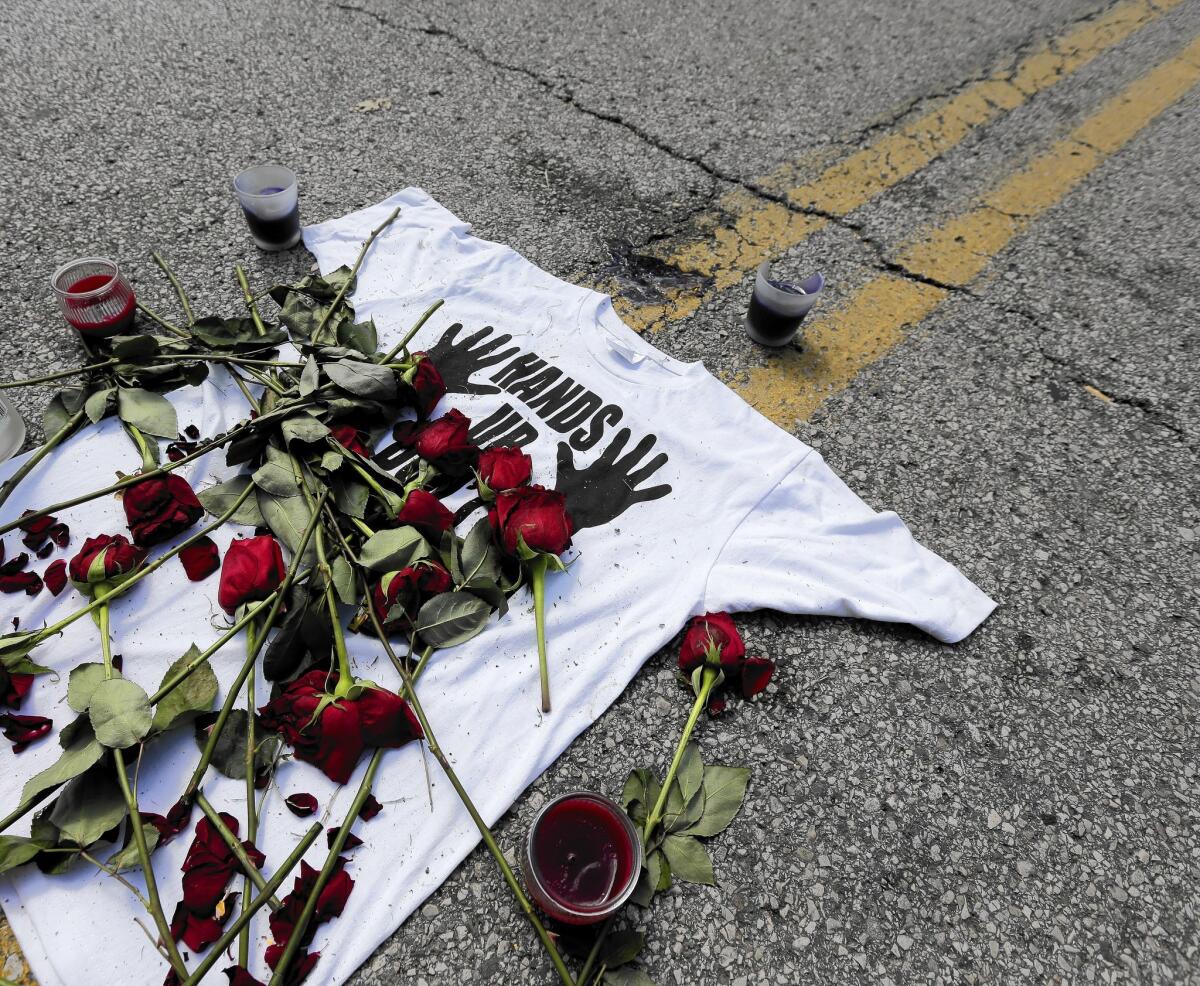Readers React: Can Americans confront their fear of blackness?

- Share via
To the editor: Erin Aubry Kaplan poses a very serious question, a question we all need to ask ourselves. (“Seeing Michael Brown,” Op-Ed, Aug. 18)
After the murder of Dr. Martin Luther King Jr., a handful of my fellow high school students, an equal mix of African Americans and whites, formed a local chapter of the National Assn. for the Advancement of Colored People Youth Council. We marched, protested and raised funds. We held clothing drives and collected used textbooks to send to rural areas of the South. We attended the NAACP national convention, attempting to improve understanding between black and white, young and old.
It now seems so long ago. Did our efforts have any positive, lasting effect? I once thought so, but today I’m not so sure. Clearly the relationship between the African American community and law enforcement remains toxic and too often deadly. We all need to examine how we feel and why.
Kaplan makes one point that I have trouble with. In order to rid ourselves of the fear of the
“stereotypical, aggressive black brute,” she suggests we need to see black people differently. True enough, but no man springs from the womb a fully formed adult presence. Soft-spoken or hostile, each one began life as a true innocent and becomes the result of how he or she was raised. Let’s not forget that.
Philip DiGiacomo, Pacific Palisades
..
To the editor: I find Kaplan’s view of the “burden of bias” to be naive.
Bias exists everywhere; we are constantly assessing others based on cues. That does not imply bigotry; rather, it is borne of natural survival instincts and brain functions.
If I have the opportunity to meet a well-dressed African American man in a business environment, my bias is he has likely overcome greater challenges than his business peers of other colors.
Place that same African American man in a hoodie on Figueroa Street as I walk from dinner in downtown Los Angeles back to the Bonaventure Hotel at 11 p.m., and the threat neurons in my brain are on fire. I’d have the same response if a tall white man with swastika tattoos walked into my elevator.
In my first professional job, at 23, we were told to read the book, “Dress for Success.” One of the lines we were told was, “It isn’t right, it isn’t wrong, it just is.” We were being told we all have the ability to influence (note that I am not saying “control completely”) the bias lens through which we are viewed, as individuals or as groups.
Glen Esnard, Newport Beach
..
To the editor: Despicably, Jonah Goldberg characterizes Michael Brown’s alleged shoplifting before his death as “thuggish and brazen.” (“In Ferguson, a race to be wrong,” Op-Ed, Aug. 18)
I have no knowledge of whether the act itself was brazen (“impudent; immodest; shameless”), but two dictionaries define a “thug” as “an assassin; a ruffian; a rough” or “an aggressive and violent young criminal.” Shoplifting is one of the least thuggish crimes there is.
Except, of course, it’s possible that in Goldberg’s mind, Brown had the defining characteristic that automatically makes a young man a brazen thug, the one so eloquently called out by Kaplan on the same page: He had the unforgivable audacity to be born black.
Geoff Kuenning, Claremont
More to Read
A cure for the common opinion
Get thought-provoking perspectives with our weekly newsletter.
You may occasionally receive promotional content from the Los Angeles Times.









